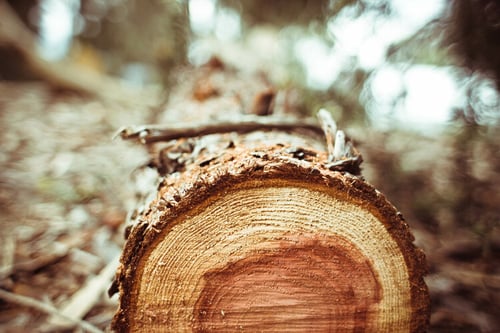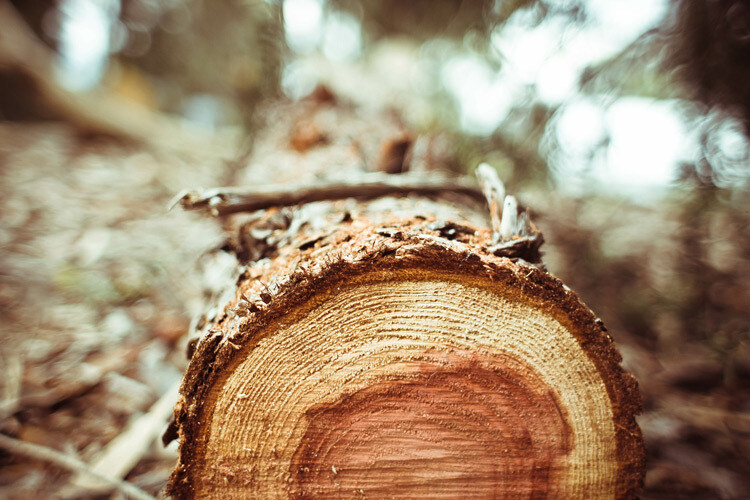Optimizing the Harvest of Eastern White Cedar
How to Make the Most of this Specialty Lumber
Eastern white cedar is a unique, rare product. Primarily found in the Northeast, this wood is prized for its durability, beauty, and natural resistance to decay. Today, we look at why eastern white cedar is considered a specialty lumber—from how it grows and how it is harvested, to how it can be fully optimized into lumber products and byproducts.

The Harvesting Process
Before harvesting begins, forest managers assess the stand of cedar trees to determine if they are mature enough for harvesting. They consider environmental factors, such as the impact on wildlife habitat and water quality. Selective cutting methods are often employed, which involve choosing individual trees for harvesting while leaving the majority of the stand intact. This helps to maintain biodiversity and protect the health of the forest ecosystem.
Once the trees are selected for harvesting, logging operations begin. Depending on the terrain and accessibility of the forest, different equipment may be used to fell and transport the cedar logs to a central collection point. They may be transported to a processing facility or staging area before being loaded onto trucks for transportation to sawmills or other facilities to be processed into lumber or other products.
Sustainable harvesting practices are often employed to minimize the impact on the surrounding forest ecosystem. This may include leaving buffer zones around streams and wetlands, protecting wildlife habitat, and replanting harvested areas with new cedar seedlings to ensure the long-term health and productivity of the forest.
AVO Fence & Supply owns a sawmill in Maine dedicated to the production of cedar products. We are a member of the Forest Society of Maine (FSM) whose mission is to “conserve Maine’s forestlands to sustain their ecological, economic, cultural, and recreational values.” Approximately 90% of Maine is forested, the highest percentage in the U.S. The FSM is committed to sustainable forestry, which means that trees are not harvested faster than they can grow back.
Because eastern white cedar grows in bogs, it is difficult to harvest. Where AVO has its operation in central Maine, the trees need to be harvested during a six-week window in the summer when the bogs are dry, or a four-week window in the winter when the bogs are frozen. This means weather conditions are favorable for a total of a few months in a year.
The Anatomy of Eastern White Cedar
The anatomy of eastern white cedar has a direct correlation to the cedar products that can be made from it. Like some species of cypress, eastern white cedar commonly grows in low-lying areas such as swamps, bogs, and along stream banks. These trees have shallow, spreading root systems that extend into the soil. Just above the roots is the flare, which is the widening of the trunk near the tree’s base where it transitions into the root system.
The trunk of an Eastern white cedar is typically straight and cylindrical, although it may become irregular with age. It is covered in a thin, fibrous bark, which is reddish-brown in color. The diameter of the trunk is typically 6 to 18 inches, making it smaller than other tree species. Eastern white cedar trees also have spreading, horizontal branches that often droop slightly towards the tips.
How Eastern White Cedar Is Utilized
Due to its swampy habitat, the center of the eastern white cedar tree may be subject to rot. This means more effort must be made to use the different parts of the tree to their best purpose. In addition, while eastern white cedar is weather resistant, it is not a structural material, so it is not suitable as a framing wood.
However, there are several primary finished goods that can be produced from the eastern white cedar tree. The lower trunk is used to make boards and half-logs for log homes. The upper trunk, where the branches are located, and the trunks of smaller trees (8-10 inches in diameter) are used for fence materials, including boards, pickets, and posts. While branches produce knots, it does not affect the quality of cedar fencing. Larger pieces of the upper trunk and smaller trees are used for lantern posts, decking, 2x4s, pergolas, and arbors. Finally, the flares of eastern white cedar are valuable because shingles, without knots, can be made from them.
Nothing goes to waste, as eastern white cedar by-products are used in a wide variety of ways. AVO’s mill supports local farmers by providing them with animal bedding. They also sell by-products to companies that produce landscaping mulch, and the rest goes for biomass and energy production.
Other uses for eastern white cedar by-products include wood chips, wood pellets, composting, insect repellent, pulp and paper production, composite materials, woodworking, and crafts. Using lumber waste from cedar mills in these ways helps reduce the environmental impact of logging and processing operations while maximizing the value of each harvested tree.
While the harvesting and processing of eastern white cedar takes special effort, the benefits of producing this durable, sustainable, and beautiful specialty lumber make it worthwhile.
AVO Fence & Supply is a provider of high-quality fencing materials and supplies, including eastern white cedar, with locations in Stoughton, Plymouth, and Hingham, MA. We are dedicated to sharing our expertise with homeowners and contractors in the New England area. Give us a call today at (781) 341-2963.

